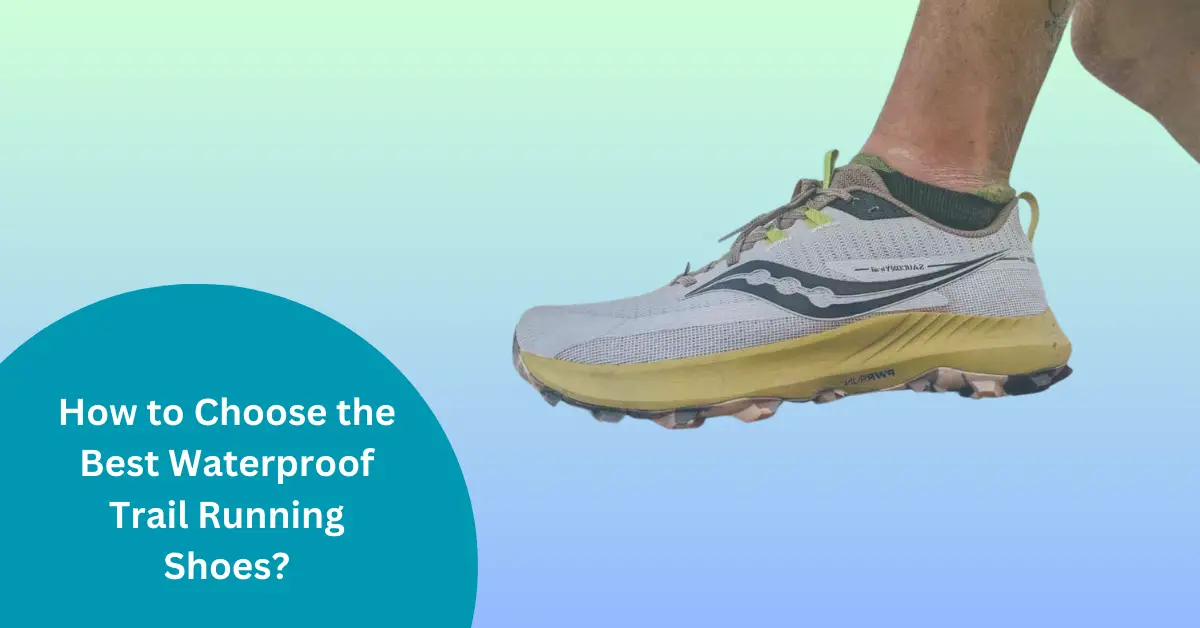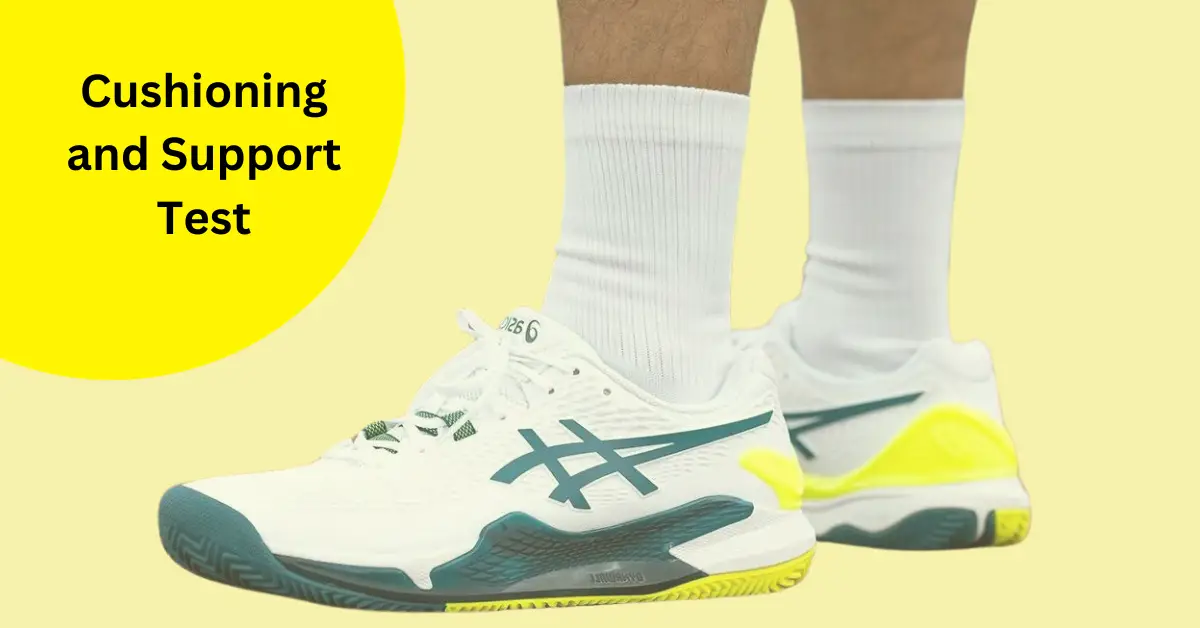Trail running is one of the most beautiful ways to connect with nature. To keep your trail running safe and comfortable you need the right gear for it. One of the important things in the appropriate gear is the best waterproof trail running shoes. Whether it’s a sloppy trail or a slick rock, a good pair of trail running shoes helps you conquer any terrain.
With so many options, how could one choose the Best Waterproof Trail Running Shoes for any terrain? Here is a detailed guide to help you in making an informed decision.
What are trail running shoes?

Trail running shoes are that category of shoes that are used specifically for trail running. Which is a form of running on dirt tracks, forest trails, mountain tracks, and rocks among other terrains. They are not like those of plain road running that are designed for smooth and flat terrains.
The trail running shoes provide for the terrains of the wilderness. Manufacturers identify and describe them as giving higher levels of safety, stability, and most important of all, the ground grip to help the runners cover the trails safely.
Types of Trail Running Shoes
As the readers will recall, trail running shoes are not a type of ‘one shoe fits all’ kind of product. There are different types designed for specific trail conditions:
- Lightweight Trail Shoes: These are the best for trails that are well-maintained and do not demand much technicality. Some can be reviewed as being relatively lighter and more comfortable. They are good for fast running; however, they might offer less protection.
- Rugged Trail Shoes: Designed for more technical terrains with many rocks and roots and other features. These types of shoes are hence bulkier and more protective. They often have deeper lugs for better ground traction on the ground.
- All-Terrain Shoes: These are shoes that are suitable for use in any terrain. They weigh just enough, are protective, and provide a good grip. So, they can be worn when traversing various terrains in one session of running.
- Minimalist Trail Shoes: There are those runners who prefer a more natural running experience. For those, there are minimal trail running shoes that have little or no cushioning and support. These are mostly used by athletes who often engage themselves in trail running exercises.
Know Why Waterproofing is Important
Waterproof trail running shoes will keep your feet dry in wet conditions. Whether it is through puddles, crossing streams, or rain-soaked trails. The technology blocks water from entering the shoe but allows moisture from sweat to leave out of it. In wet and cold conditions, this feature plays an important role in preventing blisters and maintaining warmth and comfort in the feet.
How to Choose the Best Waterproof Trail Running Shoes?

To choose the best waterproof trail running shoes some factors must be kept in mind.
1. Consider the Terrain:
Different terrains require different sorts of shoes. while selecting waterproof trail running shoes consider the type of land you are running on:
- Rocky Terrain: It needs to have a stiff sole and aggressive lug. This sole must be very stiff to hold on to rocks and irregular surfaces. The upper needs to be reinforced to protect your feet from sharp objects.
- Muddy or Wet grounds: Pay attention to shoes that have deep lugs to allow the mud to be flushed out to provide traction. A good drainage system is important in water removal as quickly as possible.
- Mixed terrain: While running over mixed surfaces, find a versatile shoe in terms of providing cushioning, grip, and protection.
2. Check the Fit and Comfort:
The best waterproof trail running shoes must fit comfortably but not too tight. If the shoe fits well, then your foot will not be able to slide so much inside the shoe. Reducing the creation of blisters and other possible injuries.
Wear the running socks you plan to run in while trying on the shoes, with enough room in the toe box area. The arch support should also be there according to the shape of the foot.
Keep in mind that trail running has steep slopes and sharp drops, so look for a shoe that provides stability or support to the ankles.
3. Check the Weight of the Shoes
Weight is a key factor, particularly in the case of long-distance trail runners. Lighter shoes will enable one to run faster and with less fatigue. However, it will provide less protection to the runner. Heavier shoes provide durability and support; they may be beneficial on rough ground, but a runner will easily get tired.
Keep in mind your running style and the amount of mileage you usually rack up. If you’re running for speed, then you’ll want a lighter shoe. If you hit rougher trails, you may prefer a little more protection with a slightly heavier model.
4. Check the Traction

Traction is important for running on trails. Keep a lookout for shoes with more aggressive tread patterns that are better equipped to handle various surfaces, such as wet rock or loose dirt. The lugs should be deep and well-spaced to avoid the clogging of mud in the sole. Besides its high grippiness, rubber compounds like Vibram are very durable. Thus, many manufacturers use them in trail running shoes.
5. Check the Durability
Since shoes in trail running face heavy demands, durability comes in first. Considerations for the materials to be used for the upper, midsole, and outsole. Look for a reinforced toe cap and sturdy overlays to protect from wear and tear. On top of that, a tough outsole can handle the abrasion of rocky or very abrasive ground.
6. Breathability vs. Waterproofing
Generally, waterproof shoes are somewhat less breathable because of the waterproofing layer. Especially if you decide to go running in hot or humid weather. Which causes sweating, which is rather uncomfortable for the feet. As for the breathability of waterproof materials, some brands developed materials that combine lightness and breathability, while being still waterproof.
Consider the climate in which you’ll be running. If you are a frequent runner in an environment where you normally encounter wet and cool weather conditions, full waterproofing could be perfect. If you live in a climate where there is warm weather sometimes and other times there is cold and wet weather, then you need shoes that is ‘waterproof but breathable’.
7. Cushioning and Support Test

Trail running includes a great deal of impact, much of it on uneven surfaces. Much of the shock is absorbed by cushioning, reducing what your joints must take up. Taller stack heights provide more cushioning but can feel less stable. On the other hand, low-profile shoes give a fine ground feel and stability but less cushioning.
Support comes next in importance, especially when one has special needs like overpronation. If possible, seek arch support, a firm midsole, and heel counters in shoes that resemble your foot.
8. Check on brand reputation and reviews
Brand reputation will tell you if the quality is decent, and the durability is high. Brands like Salomon, Brooks, and La Sportiva have made their names producing reliable trail running shoes. Customer reviews will further clarify how the shoe would work out in real life. This way, you will be able to gauge if it is right for your needs.
9. Lastly, know the price
While the cheapest option might be very tempting, remember that oftentimes you get what you pay for. If you plan to eventually invest in waterproof trail running shoes, you may save a fair amount of cash on replacements later. But it doesn’t suggest that you need to spend an absolute fortune on this. Just find out those kinds of shoes that give the features you would like to have at a price best for you.
Final Thoughts
Choosing the best waterproof trail running shoes, regardless of the terrain, is a very personal thing. It requires consideration of the exact conditions you are going to face, along with your running style and comfort preference. With an assessment of factors such as fit, traction, durability, and breathability, one can find the perfect pair of shoes that can help conquer any trail.
Also, know that the best waterproof trail running shoes will help you perform better and stay safe and comfortable—both elements that allow one to enjoy the real thrill of trail running come rain or shine. Happy running!

